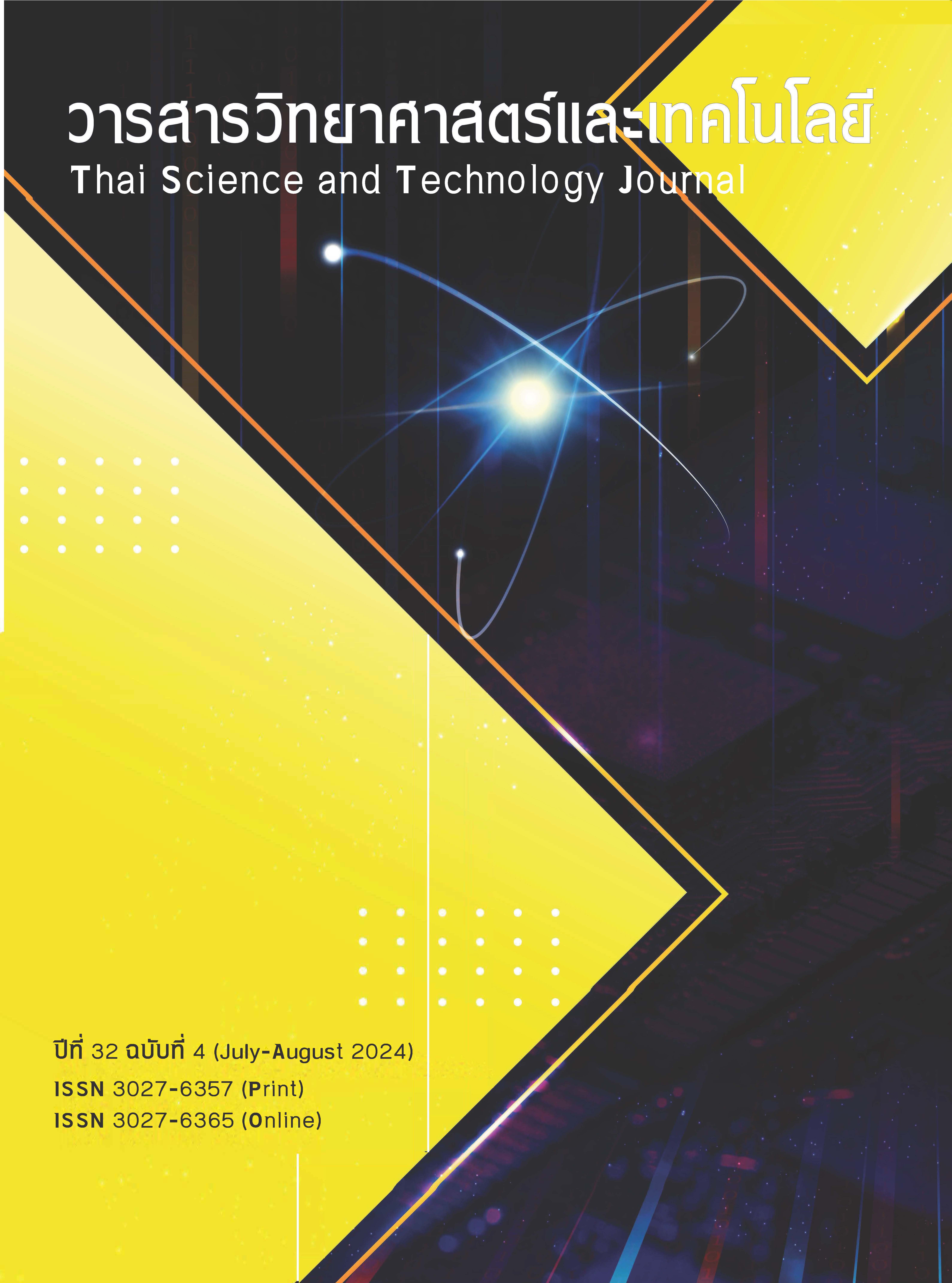Quantity and Quality of Wastewaters from Coconut Meat Peeling Process in Samut Songkhram Province
Main Article Content
Abstract
A study was conducted to determine the quantity and quality of wastewater produced from white coconut meat processing activities in Samut Songkhram Province. The study was performed between September 2018 and December 2019 and covered 234 factories across three districts and 18 sub-districts. In April and May 2020, influent and effluent water samples were collected from 20 sites. Based on the results, the factories were categorized into three groups: small-scale (56.5%) with a production of not exceeding 1.2 tons per day and a wastewater volume of 1.5 cubic meters per day; medium-scale (42.6%) with a production of 0.1-3.0 tons per day and a wastewater volume of 0.3-3.0 cubic meters per day; and large-scale (0.9%) with a production of more than 5.0 tons per day and a wastewater volume of more than 5.0 cubic meters per day. The study found that the wastewater produced from soaking and washing coconut meat had Suspended solids, BOD5, COD, and Oil and Grease ranging from 72.70-825.00, 145.50-5,326.00, 287.50-8,742.00, and 84.00-1,016.00 mg/L, respectively. Although the effluent water, after flowing through the treatment system, showeda decrease in BOD5, COD, and oil & grease concentrations by an average of 93.6±4.1%, 93.8±7.6%, and 94.5±7.5%, respectively, it still had suspended solids, BOD5, COD, and oil & grease concentrationsthat exceeded the factory sewerage benchmark, according to the Notification of Ministry of Industry regarding Industrial Effluent Standards B.E. 2560 and Notification of the Ministry of Natural Resources and Environment B.E. 2021.
Article Details
References
Jeenjaitrong, C. and Haocharoen, K., 2020, Cultural Landscape of Traditional Community in Samut Songkhram Province, Journal of the Faculty of Architecture King Mongkut's Institute of Technology Ladkrabang, 31:17-33.
Meksumpun, J., 2022, Mae Klong and the conservative development, Kasetsart University, Bangkok (Thailand). Faculty of Fisheries, Department of Fishery Biology.
Aschariyaphotha, W., Rittimontri, K., Chuankuntod, K. and Kasetkitchakan, T., 2022, The Effects of Coconut Water on the Growth of Coriander (Coriandrum sativum L.) in Hydroponics, Journal of Research and Innovation in Science and Technology, 3(3), 57-65.
Selakorn, O., Sutaphan, S., Phasinam, K., and Kassanuk, T., 2020, The Optimal Concentration of Coconut Water on Multiple Shoot Induction of Musa (AAA group) ‘Kluai Nak’ In Vitro, YRU Journal of Science and Technology, Vol.5, no.1, pp. 28-33.
Papun, B. and Chomsri N., 2021, Growth Characteristics of Acetic Bacteria in Coconut and Pineapple Juices, Journal of Innovative Technology Research, 5(1), 2-11.
Yamane, T., 1973, Statistics: An Introductory Analysis (3rd Edition), Harper and Row, New York.
R Development Core Team., 2020, R: A Language and Environment for Statistical Computing, Vienna, Austria: The R Foundation for Statistical Computing, ISBN: 3-900051-07-0.
APHA, AWWA, WEF., 2012, Standard Methods for Examination of Water and Wastewater, 22nd Ed., American Public Health Association, Washington, DC, 1360 p.
Chanakya, H. N., Khuntia, H. K., Mukherjee, N., Aniruddha, R., Murakami, J. R., and Thimmaraju, P., 2015, The physicochemical characteristics and anaerobic degradability of desiccated coconut industry wastewater, Environmental monitoring and assessment, 187(12), 772.
Ministry of Natural Resources and Environment, 2022, February 26, Notification of the Ministry of Natural Resources and Environment regarding standards for controlling wastewater drainage from small establishments that produce certain types of goods or provide services, B.E. 2021. Royal Thai Government Gazette, 139 (48), 29-32. (in Thai)
Minister of Industry, 2017, June 7, Notification of Ministry of Industry regarding Industrial Effluent Standards B.E. 2560. Royal Thai Government Gazette, 134 (153), 11-15. (in Thai)
Abdalla, K.Z. & Hammam, G., 2014, Correlation between Biochemical Oxygen Demand and Chemical Oxygen Demand for Various Wastewater Treatment Plants in Egypt to Obtain the Biodegradability Indices, International Journal of Sciences: Basic and Applied Research, 13 (1), 42.
Chukeaw, T. and Thawornchaisit, U., 2018, Biodegradability Enhancement and Decolorization of Molasses-based Wastewater from Distilleries by Electrocoagulation, Journal of Science Ladkrabang, 27(2), 65–79. (in Thai)
Płuciennik-Koropczuk, E. and Myszograj, S., 2019, New Approach in COD Fractionation Methods, Water, 11 (7), 1484 p.
Lertsriwong, S., Comwien, J., Chulalaksananukul, W., and Glinwong, C., 2017, Isolation and identification of anaerobic bacteria from coconut wastewater factory for ethanol, butanol and 2, 3 butanediol production. International Biodeterioration & Biodegradation, 119, 461-466.
Niyomrath, R., Korbouakaew, K. and Sirithongthaworn, S., 2021, Process Improvement of White Coconut Meat Production in Samut Songkhram Province, The Journal of Industrial Technology: Suan Sunandha Rajabhat University, 9 (2), 59-66. (in Thai)
Srivichai, P. and Rodsrida, C., 2021, Wastewater Treatment with Activated Sludge Process, Advanced Science Journal, 21 (2), 16-29. (in Thai)

